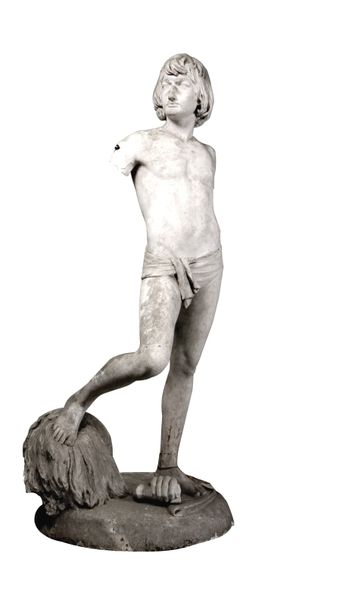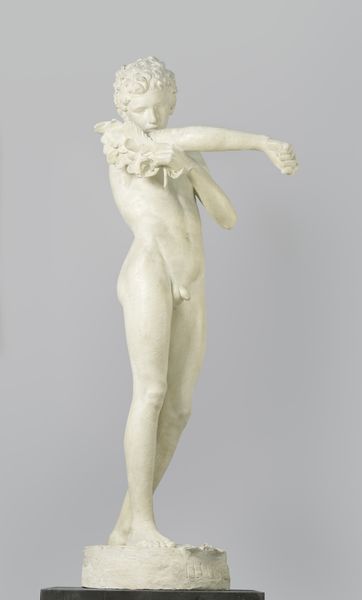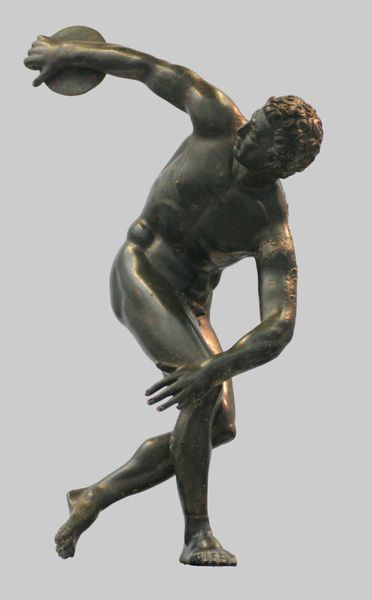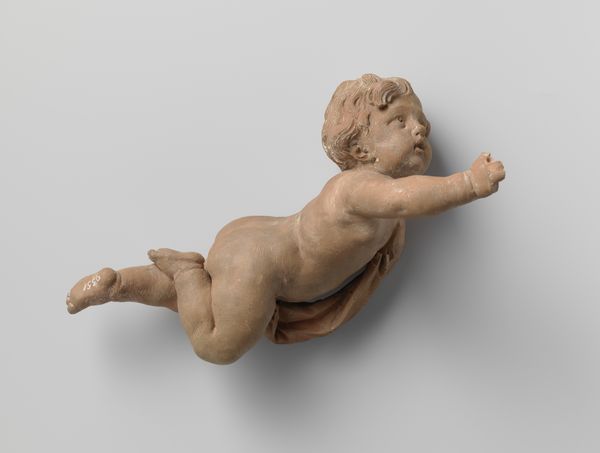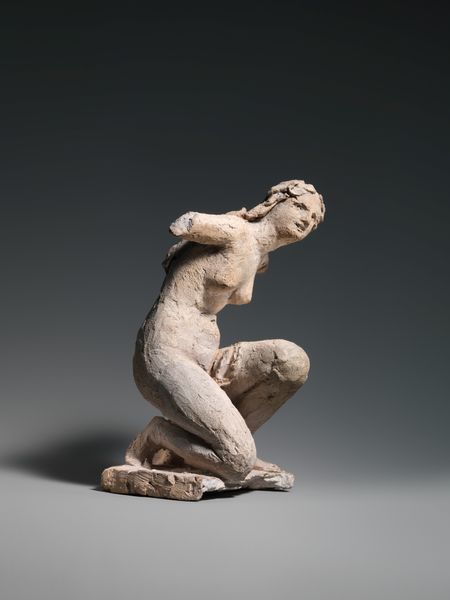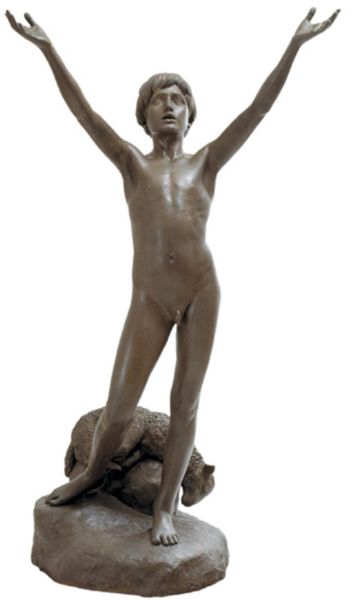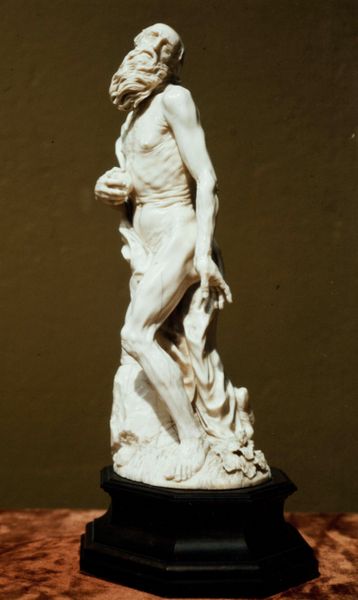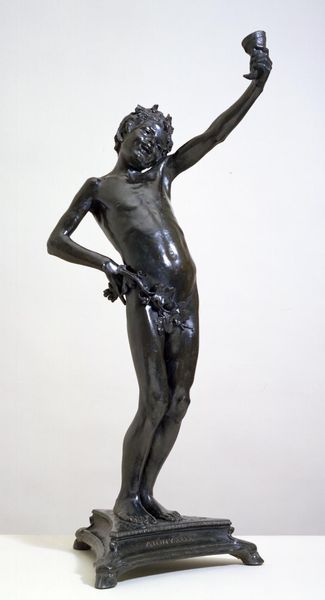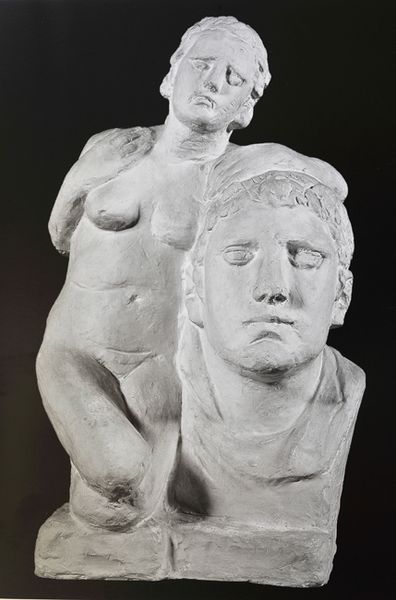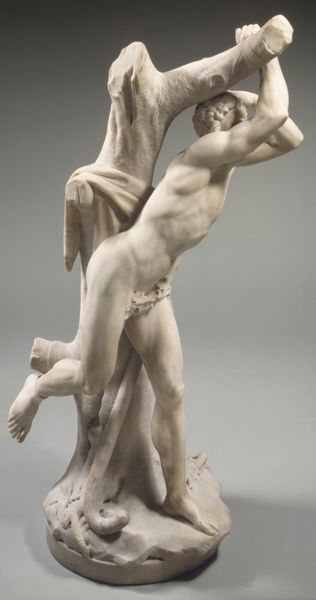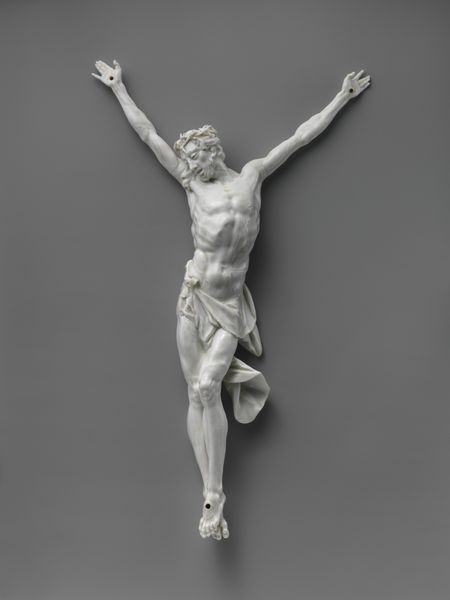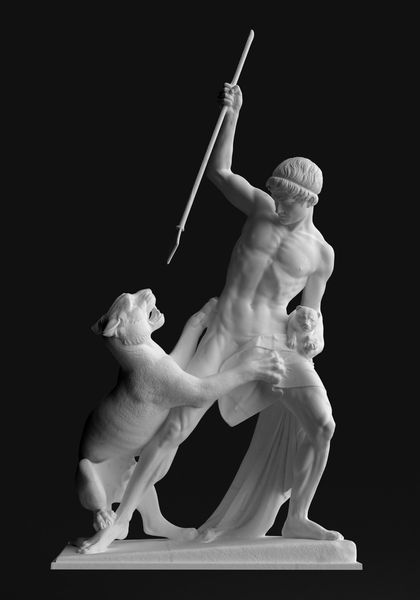
Copyright: Public domain
Jean-Baptiste Carpeaux, a sculptor working in nineteenth century France, created "Third Child of the Group of Ugolin" out of plaster, as a study for a larger sculpture. The work draws from Dante's Inferno, which tells the story of Count Ugolino della Gherardesca, imprisoned and starved to death along with his sons and grandsons. The figure’s nudity is a classical trope, yet here it emphasizes vulnerability rather than heroism. His missing arms imply the tragic impotence of youth in the face of death. The original sculpture was shocking because the artist chose to depict raw emotion rather than a polished, idealized form. Carpeaux rejected the notion of conventional beauty, and instead captured the visceral reality of human suffering. The figure embodies themes of powerlessness, familial bonds, and the brutal intersection of history and mortality. Carpeaux urges us to consider the human cost of political conflict and the agonizing realities of historical narratives. The sculpture remains a powerful meditation on despair, etched onto the youthful body.
Comments
No comments
Be the first to comment and join the conversation on the ultimate creative platform.
